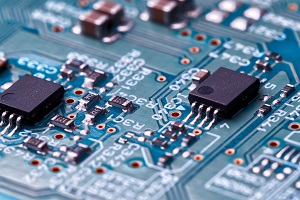When it comes to manufacturing electronic devices, every component plays a vital role — even the ones you don’t see. Among these hidden heroes are rubber parts, which are critical for protecting sensitive electronics from shock, moisture, chemicals, and electromagnetic interference. Selecting the right rubber materials is not just about performance — it’s about ensuring long-term reliability, safety, and efficiency.
Whether you’re building circuit enclosures, connectors, or ruggedized components, the choice of rubber can make or break your product. This guide dives into the essentials of choosing the best rubber products for the electronics industry, and what every manufacturer should consider when partnering with a rubber parts supplier.
Why Rubber Is Essential in Electronic Applications
Rubber may not power up a device or transmit data, but it protects and supports the components that do. Here’s how rubber parts are used across electronics:
- Seals and gaskets to prevent dust, water, and chemical ingress
- Shock absorbers and vibration mounts for mobile and industrial devices
- Insulators that shield against electrical interference and thermal stress
- Protective covers for buttons, switches, and displays
Because of these critical functions, electronics manufacturers rely on custom made rubber parts for electronics that meet precise material and dimensional standards.
Key Factors to Consider When Selecting Rubber Materials
Before placing an order or finalizing a design, consider these essential factors:
1. Operating Temperature Range
Electronics generate heat, and many are used in environments where temperatures fluctuate drastically. Your rubber material must withstand both high and low temperatures without cracking, melting, or losing flexibility.
- Silicone rubber is the go-to choice for high-temperature applications, maintaining performance up to 250°C.
- Neoprene and EPDM are suitable for medium-range thermal requirements with good aging resistance.
2. Chemical Exposure Resistance
Whether in manufacturing plants, automotive systems, or medical devices, electronic components can come into contact with oils, solvents, and industrial fluids. The rubber must resist degradation when exposed to such chemicals.
- Viton (FKM) offers outstanding chemical resistance, especially in high-performance environments.
- Nitrile Rubber (NBR) is also widely used for fuel and oil resistance in control systems and sensor housing.
3. Electrical Insulation Properties
Some rubber parts must serve as insulators to prevent unwanted electrical flow or protect users from electric shock.
- Silicone and EPDM are excellent electrical insulators.
- These materials are widely used in wire and cable management, switch gear, and sensitive electronic packaging.
4. Mechanical Durability
Your rubber parts must endure mechanical stresses such as compression, torsion, and repeated impacts. Choosing the right rubber material ensures the product won’t degrade or lose integrity over time.
- Natural rubber offers high elasticity and tear resistance.
- Neoprene adds strength and durability, especially in harsh conditions.
5. Environmental Resistance
UV rays, ozone, water, and extreme climates can all degrade rubber. For outdoor or industrial applications, choose materials that resist environmental stress.
- EPDM performs exceptionally well in UV and ozone-rich environments.
- Neoprene maintains stability in various climates and is resistant to ozone and weathering.
6. Material Compliance and Certifications
If you manufacture electronics for regulated industries such as medical, aerospace, or automotive, ensure your rubber materials meet relevant standards like RoHS, UL, REACH, and FDA (if required).
- Partner only with rubber moldings for electronics suppliers who can provide documentation and traceability.
Common Rubber Materials Used in Electronics
| Material | Key Benefits | Best Use Cases |
| Silicone Rubber | Excellent thermal and electrical insulation, chemical resistance | Keypads, gaskets, connectors |
| EPDM | UV, ozone, and moisture resistance, good electrical insulation | Outdoor enclosures, battery seals |
| Viton (FKM) | High-temperature and chemical resistance | Sensor seals, engine control units |
| Nitrile (NBR) | Oil and fuel resistance, durable | Cable harness boots, switch covers |
| Neoprene | Versatile, weather-resistant, durable | Vibration mounts, electronic housings |
| Natural Rubber | High elasticity and tear resistance | Shock absorbers, vibration pads |
Each material has its strengths — the key is matching those strengths with your specific application needs.
Custom Made Rubber Parts for Electronics
Off-the-shelf components may work in some applications, but as electronic devices become more compact and complex, customization is critical. That’s where custom made rubber parts for electronics come into play.
Custom solutions allow for:
- Precise fit in limited spaces
- Optimized performance for unique conditions
- Integrated functionality, such as combining sealing and insulation
Leading rubber parts for electronics suppliers often offer full prototyping and design support, helping manufacturers fine-tune components before mass production.
Key Applications in the Electronics Sector
Rubber components are found in nearly every sub-sector of electronics, including:
- Consumer electronics (phones, wearables, smart home devices)
- Industrial controls (sensors, relays, switch housings)
- Automotive electronics (engine sensors, infotainment systems)
- Medical devices (monitors, handheld diagnostics, sealing systems)
- Telecommunications (server housings, outdoor cables)
ce of rubber moldings for electronics manufacturers all the more important.
Each of these applications has different demands in terms of heat resistance, insulation, and environmental protection — which makes the choi
Global Sourcing Considerations
When selecting a manufacturer of custom rubber parts electronics, choose one with:
- In-depth materials knowledge: Understanding the science behind the materials they offer.
- Design support: Assistance with prototyping, CAD modeling, and design optimization.
- Strict quality control: ISO certifications, traceable raw materials, and thorough inspection processes.
- Reliable logistics: Fast, consistent delivery times with proper inventory management.
A trusted supplier should not only deliver quality but also act as a problem-solver and innovation partner.
Leading the Way in Rubber Excellence
Airex Rubber, based in the USA, exemplifies what it means to combine engineering precision with deep application expertise. With a strong reputation in the electronics sector, Airex Rubber produces molded rubber parts for the electronics industry that are engineered to protect against vibration, shock, EMI, and environmental exposure. From seals to grommets to custom moldings, Airex helps electronics manufacturers design with confidence and deliver reliable performance in demanding conditions.
Final Thoughts: Smart Rubber Choices Lead to Better Electronics
Choosing the right rubber isn’t just a matter of material — it’s a decision that affects your product’s reliability, lifecycle, and safety. From selecting the proper compound to partnering with experienced rubber moldings for electronics suppliers, the decisions you make today will determine your product’s success in the market.
In an era where devices are shrinking and expectations are growing, there’s no room for error. Whether you’re looking for rubber parts for electronic applications or exploring custom made rubber parts for suppliers, make your choice with long-term performance in mind.

